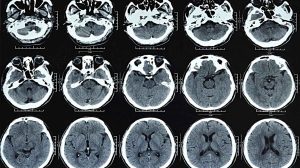Lactose intolerance is a condition in which the body is no longer able to digest lactose.
Understanding
Lactose intolerance is a condition in which the body is no longer able to digest lactose. This is a type of sugar that is found in milk and its processed products.
Several risk factors can make a person more susceptible to lactose intolerance. These risk factors include:
- Age. Lactose intolerance most often occurs between the ages of 20–40 years. Infants and children can experience it but the cases are rarer than adults.
- ethnicity. Asian, African and Indian-American ethnicities are more at risk of developing lactose intolerance.
- Prematurity. The enzyme lactase is produced in the small intestine towards the end of the third trimester of pregnancy. Babies born in the earlier trimesters have the potential to have little or no lactase.
- Presence of intestinal disease. Diseases such as celiac disease and Crohn’s disease can interfere with intestinal function and cause uncontrolled growth of bacteria. This condition can make sufferers more at risk of developing lactose intolerance.
- Currently on cancer treatment. Cancer that attacks the intestinal area or spreads to the intestine has the potential to reduce overall intestinal function, including its ability to digest lactose.
Lactose Intolerance Diagnosis
The diagnosis of lactose intolerance is generally known from the presence of digestive complaints when consuming milk and its various preparations. When milk is removed from the daily menu list, complaints generally improve and symptoms slowly disappear.
To ensure lactose intolerance, several additional tests are needed, such as:
- Lactose tolerance test
Someone who is suspected of having lactose intolerance will be asked to drink a drink that is high in lactose.
Two hours after consuming the drink, his blood sugar levels were checked in the laboratory. If his blood sugar level doesn’t increase, then most likely he really can’t digest the lactose that enters his body.
- Hydrogen Breath Test
Just like the lactose intolerance test, someone who is suspected of having lactose intolerance will be asked to drink a drink that is high in lactose. But this time what was examined was the hydrogen content in his exhaled breath.
A person with lactose intolerance has an inability to digest lactose. As a result, this lactose will be fermented by large intestine bacteria.
The by-products of this fermentation process are hydrogen and various other gases. High levels of hydrogen detected in the breath indicate an incomplete digestive process which leads to a diagnosis of lactose intolerance.
- Stool acidity test
For children who have difficulty undergoing other tests, a stool acidity test can be used to confirm a diagnosis of lactose intolerance. Lactose that is not digested and fermented in the large intestine will produce lactic acid which is wasted through the feces or feces.
Lactose Intolerance Reason
Normally, the human small intestine produces lactase, an enzyme whose function is to digest this lactose. By lactase, lactose is broken down into two types of sugar, namely glucose, and galactose.
Glucose and galactose are then absorbed in the intestines to be converted into energy. In those who have lactose intolerance, lactase production is disrupted. The amount of lactase in the body becomes reduced or even absent altogether. As a result, the incoming lactose remains in its intact form and enters the large intestine.
Putrefactive bacteria in the large intestine then ferment this lactose. The by-products of the fermentation process are gas and acid which can trigger various complaints for the sufferer.
Lactose intolerance experienced by adults is generally genetic and will be carried throughout their lives. However, in children and young people, lactose intolerance generally occurs due to certain diseases and will disappear in a few weeks as the underlying disease heals.
Lactose Intolerance Symptom
Various complaints that arise due to lactose intolerance generally occur 30 minutes to 2 hours after a person consumes milk and its processed products. These complaints include:
- Diarrhea
- Nausea and vomiting
- stomach cramps
- Bloating
- gassy stomach
- Stomach twist
Treatment
There is no specific treatment that can be done to treat lactose intolerance. However, the symptoms of this disease can be minimized by avoiding consumption of milk and products containing lactose.
Because they cannot consume milk, a person with lactose intolerance has the potential to experience a deficiency of calcium and vitamin D. Even though these two types of minerals are needed to maintain healthy bones. For this reason, in certain cases, calcium and vitamin D supplementation is also needed to ensure the fulfillment of the body’s needs for these two types of minerals.
Lactose Intolerance Complications
Milk is a food source that contains calcium, protein, and various types of vitamins such as vitamins A, B12, and D and the minerals zinc and magnesium. Limiting the consumption of milk can increase a person’s risk of being deficient in these various types of vitamins and minerals.
Some diseases that can arise as complications are:
- Osteopenia or bone fragility can lead to osteoporosis
- Osteoporosis which puts a person at risk for sudden fractures
- Malnutrition results from the inability to digest the nutrients the body needs to grow and develop.
Lactose Intolerance Prevention
There is no specific prevention to avoid the risk of lactose intolerance. A person with lactose intolerance can protect themselves from various complications that can be caused by their disease by routine control to the doctor and looking for other food alternatives that can replace the content of milk and dairy products.












Add Comment